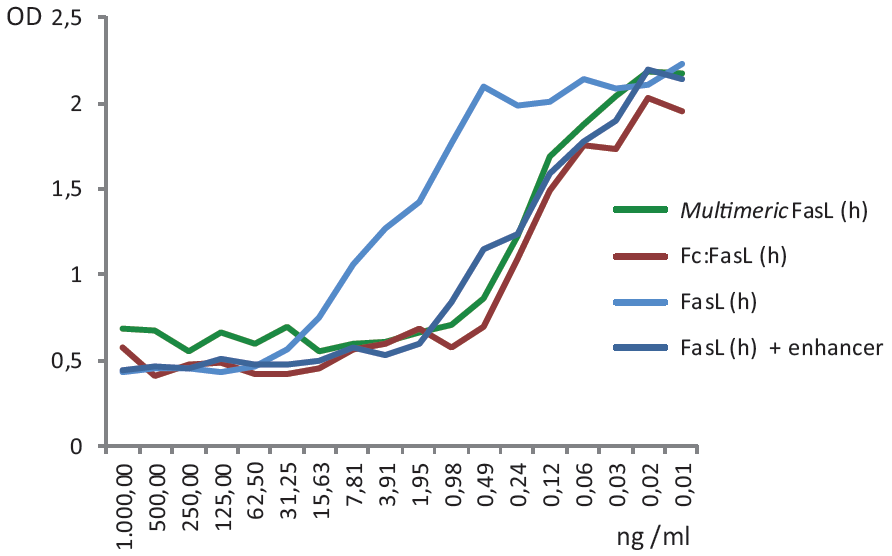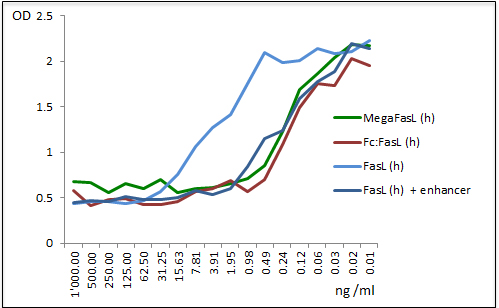
Oligomerisation of FasL (h) efficiently triggers Jurkat cell death.Method: Jurkat cells were treated O/N with the indicated concentrations of FasL (human) (multimeric) (rec.) (Prod. No. AG-40B-0130), Fc:FasL, Soluble (human) (rec.) (Prod. No.
FasL (human) (multimeric) (rec.)
AG-40B-0130
Protein IDP48023
Product group Proteins / Signaling Molecules
Overview
- SupplierAdipoGen Life Sciences
- Product NameFasL (human) (multimeric) (rec.)
- Delivery Days Customer10
- CertificationResearch Use Only
- Concentration0.1 mg/ml
- Estimated Purity>95%
- Protein IDP48023
- Protein NameTumor necrosis factor ligand superfamily member 6
- Scientific DescriptionMultimericFasL™ is a high activity construct in which two trimeric FasL are artificially linked via the collagen domain of ACRP30. This construct very effectively mimics the natural membrane-assisted aggregation of FasL in vivo. FasL is a cytokine that binds to TNFRSF6/Fas, a receptor that transduces the apoptotic signal into cells. It is involved in cytotoxic T cell mediated apoptosis and in T cell development. FasL treatment of stem cells is a robust method for proliferating cells in culture while improving their stemness properties. Treatment with FasL results in a large quantity of Adipose Derived Stem Cells (ASC) of high quality. - Protein. Human FasL (aa 139-281) is fused at the N-terminus to mouse ACRP30headless (aa 18-111) and a FLAG®-tag. Source: HEK 293 cells. Endotoxin content: 95% (SDS-PAGE). MultimericFasL™ is a high activity construct in which two trimeric FasL are artificially linked via the collagen domain of ACRP30. This construct very effectively mimics the natural membrane-assisted aggregation of FasL in vivo. FasL is a cytokine that binds to TNFRSF6/Fas, a receptor that transduces the apoptotic signal into cells. It is involved in cytotoxic T cell mediated apoptosis and in T cell development.
- Storage Instruction-20°C,2°C to 8°C
- UNSPSC12352202

-SDS.jpg)

